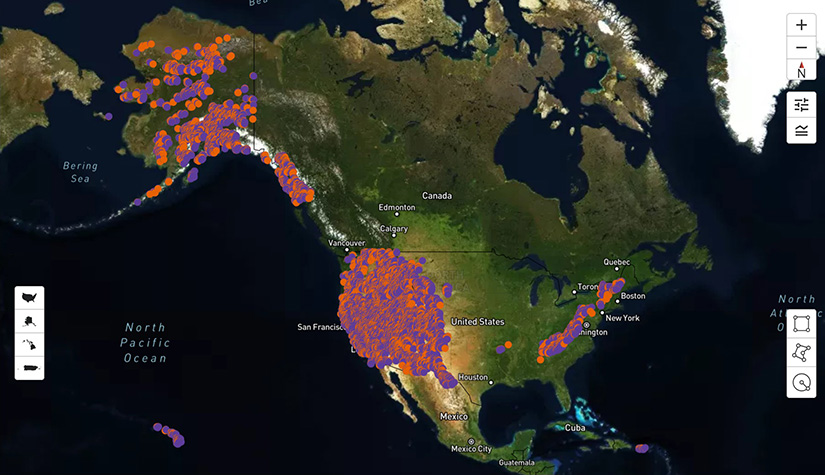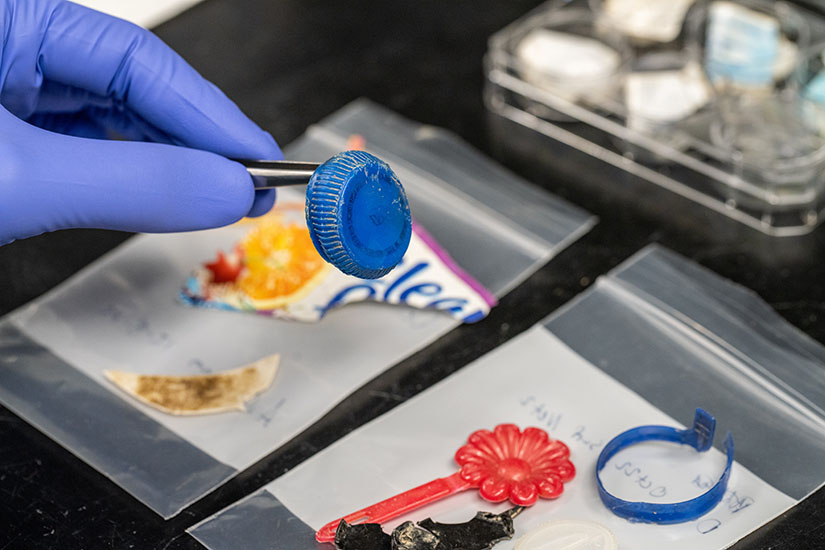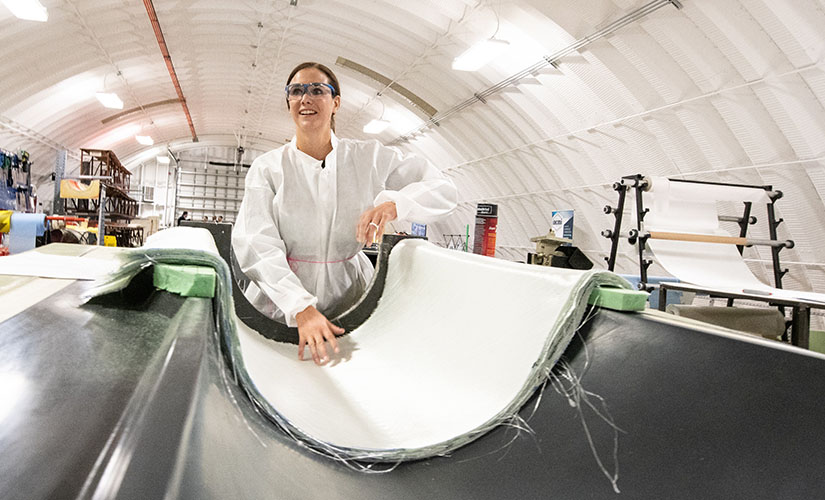It’s Earth Day! Let’s Recycle EVERYTHING
NREL Water Power Researchers Are Helping Recycle Plastics, Wastewater, and Renewable Energy, so We Are Recycling Some Earth-Friendly Stories
This year, the Earth Day organization continued its 2022 theme, “Invest in Our Planet.” And we like it—not just because the U.S. Department of Energy's National Renewable Energy Laboratory (NREL) invests in our planet in almost everything we do. Earth Day's thematic take two also provides a good reason to do some recycling of our own.
To celebrate Earth Day 2023, we compiled a list of three Earth-friendly, tree-hugging, planet-protecting NREL water power research areas, along with a few specific accomplishments from the last year. While recycling themes—plus waterborne plastics, wastewater, and aquatic power—why not stories, too? Help us save the Earth: reduce, reuse, recycle, and reread!
1. We Are Working To Reduce Carbon Emissions by Advancing Water Power
Water power is renewable. Because the energy flowing in our rivers and ocean waves, currents, and tides is highly reliable and predictable, this renewable resource can play a key role in decarbonizing the country’s energy grid. Our experts collect data, design models and tools, and analyze new technology designs to help both the well-established hydropower industry and up-and-coming marine energy industry generate more water power, safely and affordably.
New Tool Helps Researchers Make the Most of Wave Power
As any surfer knows, no two ocean sites come with the same waves. That is why NREL experts designed a new tool to help wave energy technology developers learn how their devices—no matter how small—might perform in different ocean sites. Now, the tool could help accelerate the development of wave energy devices.
How Will Hydropower Bolster a Renewable Energy World?
NREL’s experts analyzed whether adding more pumped storage hydropower to the U.S. power grid could help reduce carbon emissions (spoiler alert: it most definitely could). The team also designed a new tool to identify promising sites to build more pumped storage hydropower facilities, which act as energy storage giants. These systems already provide 93% of the United States’ grid-scale energy storage.

2. We Are Hunting for Ways To Reuse Materials, Like Plastics
Plastic pollution, like climate change, is now considered a global crisis. About 8 million metric tons of plastics end up in the ocean every year—a weight equivalent to 42 Olympic-size swimming pools' worth of water. Here at NREL, our experts are finding clever ways to combat this crisis.
Waterborne Plastics Assessment and Collection Technologies Project
Waterborne plastics debris could significantly affect the health and well-being of Americans, their communities, and the ecosystems they depend on. That is why experts from NREL and the Department of Energy's Pacific Northwest National Laboratory are working to measure and remove those plastics using renewable energy from river currents. Once collected, such plastics could then be broken down and reused, too.

Q&A With Robynne Murray: Rebel With A Cause—And an Ice Axe
There is no doubt we need more clean energy to cut down on carbon emissions. Because some renewable energy technologies, like wind and tidal turbine blades, are built using tough plastics, NREL’s Robynne Murray and a team of chemists and engineers concocted an award-winning thermoplastic resin that can be used to build recyclable turbine blades. She is also making plastics from sugars instead of traditional fossil fuels.

3. We Are Designing Better Ways To Recycle Wastewater and Salt Water
As the climate gets hotter and drier, water supplies are shrinking, especially in the drought-prone American West. But NREL’s experts are building more efficient, affordable, and clean ways to make clean drinking water from less conventional sources, like seawater and wastewater.
A HERO's Journey: NREL's Wave-Powered Desalination Device Returns to the Outer Banks
In August 2022, NREL researchers deployed the laboratory’s first wave-powered desalination device for a second in-water test. Known as the hydraulic and electric reverse osmosis (or HERO, for short) wave energy converter, the device can remove salt and impurities from seawater to generate clean drinking water using energy from ocean waves.

New Model Could Help Break Through Inefficiencies of Common Water Treatment Systems
The most common way to treat and reuse nontraditional water supplies is through a process called reverse osmosis, which can be both expensive and energy intensive. But recently, two members of the National Alliance for Water Innovation research consortium used supercomputers to discover a new system design that could make these technologies about 40% more energy efficient—and therefore more cost-effective—while producing the same amount and quality of clean drinking water.
Want more? Browse our water research news to learn about the many ways NREL invests energy and minds into protecting our planet.
Learn more about NREL water power research, and don’t miss out: Subscribe to NREL's water power newsletter, The Current.

